A History of Ruins and Ghosts
In these photographs by André Cepeda, we see ruins, fragments, debris, rubble, remains, material remnants. They are like viscera, skins and torsos of the city, partial details, micrologies of an urban reality in which life has been completely absorbed into the kingdom of things. And it is justifiable to call this pure immanence a “kingdom of things”, in the same way we talk of the animal kingdom or mineral kingdom, since it is an uninhabited world: abandoned, silent, haunted by its own ghosts. It arouses our desire to embrace a totality, to attain the meaning of an urban landscape (if this oft-used expression does not contain an inherent contradiction). Yet the analytical recording and the micrological and materialist focus remain, removed from any juxtaposition and composition hypothesis that the urban landscape presupposes. What we have here is not the documentation of a catastrophe, nor archaeological sites with photogenic or picturesque ruins. These photos could not be further from the romantic aesthetic of the ruin – whose model is the ancient column – and its modern derivations. Decrepitude and the weathering of time are apparent. But this is a time shorn of all its historic notions, more akin to the weather system. They are ruins without a history (and therefore without an aura), neither arousing nostalgia nor evoking tragedy. Their expressive value is obtained entirely from the prose of the world. The contemporary ruin, a motif and an image of our time, is neither a monument nor a landscape; it is the flesh of a devastated, destroyed, or abandoned city. Huge abandoned and decaying blocks are the most common example of the ruin's modern image. The destroyed city and the ghost town are images that permeate the spirit of the time, our Zeitgeist.
***
The ruin is, by definition, a fragment. Yet if we take the fragment in its romantic context, as a literary form or an aesthetic category, then it is more accurately in opposition to the ruin. The fragment is a break from classical wholeness and harmony and yet it is an autonomous unit, turned in on itself. Schlegel defined the fragment as “[a] small work of art, [which] has to be entirely isolated from the surrounding world and be complete in itself like a hedgehog”. The fragment, in the romantic sense, is linked to the whole, from which it takes its essence. Thus, contrary to the ruin, which is accidental, inharmonious, and may relate purely and simply to an absurd form, the fragment results from a project and, consequently, has a character. In an “essay on aesthetics”, from 1907, about ruins (Die Ruine. Ein ästhetischer Versuch), Georg Simmel also established a difference between fragment and ruin, using the examples of a painting from which particles of paint have fallen off, a statue with mutilated limbs, an ancient text of poetry from which words or lines are lost or cannot be entirely reassembled. According to Simmel, these diminished works, the remains of a whole, do not have the aspect of an artistic unit. Yet the ruins of a building are different: In them, the forces and forms of nature acted upon what is missing or has disappeared, thereby creating a new whole. Simmel is clear on this point: “(...) out of what art still lives in the ruin and what nature already lives in it, there has emerged a new whole, a characteristic unit”. Simmel is referring to natural decay and the action of vegetation on ancient ruins. The urban elements and sites that André Cepeda photographed are not yet the ruins mentioned by Simmel, although the early advance of nature can be glimpsed in some of them, because it is towards nature that all ruins are destined. They are manifestations of an ongoing process of ruin with no historical breadth, unique to the contemporary city and subject to fleeting forces, transformations, movements, and configurations. This process of ruin is signalled by a variety of signs which point at erosion, decay, deformation, abandonment, and emptiness. Strictly speaking, these photos only allow us to talk about ruins as a consequence of interpretive creation, as it were, in an almost abstract sense, its concrete manifestations residing in these signs. Or perhaps the ruins of our time can be nothing more than the decayed city (made wretched by social “warfare” rather than bombs) or the ghost town. It is a ruin with a social context, akin to a document rather than a monument. A close inspection of these photographs reveals the traces of a disappearance, of a remain that can no longer be salvaged, reified.
***
Ruins, unless the result of a sudden natural or man-made catastrophe, are the work of time. As such, they are manifestations or embodiments of history. Yet as is the case with the manner of experience in the modern city, which has become an experience of shock, of an episode that is not transmissible as a true experience (Walter Benjamin gave us the concept of this new experience marked by poverty), the urban ruin of our times, a product of our civilisation, has nothing to do with prolonged temporality, which originates in the past and slowly progresses through time; nor is it subject to a fixed topography. The ruins that André Cepeda photographed are vestiges of an urban reality in which the passage of time always translates to decay, time that never becomes history. For this reason, they do not evoke an archaeological photograph but rather an image that drifts along the surface of time. They are more in the ragman mould than that of the flâneur. Both are detached from the ordinary world and in their wanderings do not see what everyone else sees, the useful and the conventional. But while the flâneur is a romantic figure, disorderly and impulsive and given to looking upwards, seeking the symbols of desire which fill the city, rather than down at the pavement, the ragman sees in the street nothing but broken dreams, rags that he collects like a Lumpensammler, as Benjamin dubbed him. The ragman photographer is unaware of the happy disposition of urban landscape photographers, who are authorities on the aesthetics of city photography and feel that cities and photography are a match made in heaven. No, he rejects aesthetic conventions and representation codes and maintains absolute privacy, bordering on the clandestine, over his movements, which often involve places that are so far from the trodden path that they appear internal or completely removed. He sets off in search of remains and signs, his urban reality having an expressive, almost grotesque, physiognomy. And, as a photographer of signs, he is a delirious semiotic. The result can be an extreme semiotisation of the ongoing process of ruin and decay within the city.
***
The material body of the city is no longer just stone (a mineral body) but cement, glass, plastic, aluminium. And upon this material body, inseparable from it, a spiritual life is projected. This spiritual life is, on occasion, daubed on the city walls in the form of inscriptions, murals, graffiti. This symbolic space of ghostly projection and production is absent from these photographs. Everything in them appears devoid of memory and spirit. Material opacity reigns supreme, more akin to detritus and rubble than to ruins. And if there are hieroglyphics of an urban culture to decipher, they are extremely basic. Here, it is not just ruin that advances. The desert also takes root.
***
There is a well-known idea of the city as a palimpsest, formed of several layers of urban text. This implies that the city is bursting with visual signals and that these signs, as well as being diverse and great in number, produce simultaneous and overlapping effects, like a collage. And we can establish a contrast between what is deemed discourse and what is deposited as an accumulation without rules. The city as text enters into the realm of legibility, whether this readability applies to the architectural or the social physiognomy. The plan of a city, with its labyrinth of transport links, its thoroughfares, and its intersections, becomes the image of an awareness equivalent to an “internal city”, as Valéry noted in a text about Paris. If Valéry discovered that the city has the structure of consciousness, the idea of the legibility of the city became established when the modern metropolis, with its suggestive layout and as a panoply of possible experiences, incorporated codes that are like a language with its own grammar (making a metaphor like “urban phrase” possible). The big city is a whole world and this world is like a book. Hence the idea of the legible city, the city as a semiotic space in which nothing, whether material or not, is bereft of meaning. The city is a forest of signs. Walter Benjamin raised this issue of legibility when describing his archaeological exploration project in Paris, “capital of the 19th century”, as moving from a “book of nature” to a “book of the city”. Let us read an excerpt from The Arcades Project: “The expression ‘the book of nature’ indicates that one can read the real like a text. And that is how the reality of the nineteenth century will be treated here”. For Benjamin, reading is a deliberate experience, a quest to construct meaning. For him, Paris was a true place of signs. Yet reading a city can at times be like deciphering the writings of a lost civilisation, for not everything was written to be bequeathed to future generations, to be handed down to posterity. How can this idea of the city as a legible text serve us when looking at these photographs by André Cepeda ? It should first be noted that they contain almost no urban syntax. If there is ultimately a syntax, it emerges by juxtaposing the series of photographs. Without such a montage we would almost not have a city. We would merely have urban fragments – features, remains, details – that do not form part of the syntactic composition of an extensive “urban phrase”. The city appears as absence, only emerging under the guise of details. But one has to imagine that it is there, hidden in the details like God or the Devil, unseen because the photographer has a micrological focus. The city is anonymous – we do not know which it is nor where it is. Even the social legibility of the signs, which could provide a significant clue, is cloaked in opacity. There is a strong desire in this photography to fragment and suspend meaning, to reveal signs in such a way that they offer themselves in their materiality, avoiding all symbolism, metaphysics, transcendence, and sometimes even meaning. Thus, even if we are permitted to speak of ruins, we should avoid evoking a poetics of ruins. It is neither poetry nor literature; it is a physics of ruin and decay.
***
In his essay on aesthetics within the context of ruins, Georg Simmel highlighted an antagonism between two poles: on the one hand, the “striving of the spirit”; on the other, the “necessities of nature”. That which falls within the order of the spirit moves upward, in a movement that is also that of sublimation; that which is of the order of nature is subject to gravity and, as such, tends towards the ground, in a falling motion. The arts such as poetry, painting, and music are made of matter that becomes invisible to a certain extent. Then, what emerges is the “spiritual” dimension (it should not be forgotten that in Simmel's era and milieu, the word “spirit” was used frequently). On the other hand, architecture cannot escape from its material force, meaning it inevitably falls into ruin: “What has led the building upward is human will; what gives it its present appearance is the brute, downward-dragging, corroding, crumbling power of nature”. In ruins, Simmel sees a confluence of natural forces and spiritual aspirations, and from there the “sense of peacefulness” that they convey. Clearly, Simmel is thinking of ruins in accordance with the romantic model. The contemporary ruin is something else, far-removed from this outlook. It is the mirror of a present that contemplates its deserted space, reduced to its pure material condition, given over to the life of things. However, Simmel's ruin aesthetics, based on the opposition between spiritual elevation and the fall brought about by the forces of nature, aids a reflection on the condition of ruins, of decayed reality, and the remains that André Cepeda's photographs represent. For they also signify, to a large extent, that which they reject and from which they distance themselves. They affirm and deny, display and conceal.
***
Simmel demonstrated that the ruin is a place where history and nature meet, where history is transformed into nature. These photographs fly in the face of symbolic meaning. They contain no trace of symbolism, which is why they appear so opaque and encased in immanence. In the final instance, they allow us to see a history turned into stone – its unavoidable becoming-ruin – a still-life. The depiction of a history-nature hybrid - history transformed into nature – that Simmel analysed in his essay on ruins, is also at the root of a theory on allegory that Walter Benjamin developed in his book on Baroque drama. This theory on allegory has a particular resonance in the photography of André Cepeda and takes it in unexpected directions. Firstly, towards Baroque ways of depicting the world and exhibiting history. The direct links between allegory and ruins was formulated by Walter Benjamin in a famous phrase: “Allegories are, in the realm of thoughts, what ruins are in the realm of things”. In this sense, allegory is an apt way of representing temporal expiration, demonstrating the facies hippocratica, the cadaver's physiognomy, of history. As we know, allegory and symbols are old adversaries, with the latter being lauded to the detriment of the former (romanticism expounds the idea of the symbol being superior to the vacuous allegory). Walter Benjamin sought to return the allegory to the fore, attributing it with great dignity. Above all, he demonstrated its importance in certain moments in literary history: in the Baroque period and in Baudelaire, who in the view of Benjamin was an allegorical poet – one of the factors in his modernity. The symbol is determined by an absolute unit of the “sensible object” and the “metaphysical object”, it assumes a direct, internal, and non-contradictory relationship with the essence or idea. In its classical grandeur, it is an expression of totality. The allegory is a form of expression that is entirely distinct from the idea that it describes and can be characterised by arbitrariness and non-immediateness. In this way, the symbol is to being what the allegory is to meaning (and this allows us to see why Benjamin relates it to a form of modern writing). It is in this sense that we are able to see processes of allegorical meaning within these photographs, which reveal the sense of history as a field of ruins, a succession of signs that depict decline and present the unavoidable advance of ruin. The allegorical physiognomy of the city transformed into ruins, of history transmuted into nature: this is what these photographs show us. They offer the eye of the beholder a petrified “landscape” that has a grim and painful quality.
António Guerreiro
A History of Ruins and Ghosts by António Guerreiro, for the book "Depois"
At the moment André Cepeda has a solo show curated by Urs Stahel, at MAAT - Museum of Art, Architecture and Technology in Lisbon, until January 2021
His last book published by Pierre Von Kleist Editions, can be ordered here
Solo exhibition at Cristina Guerra Contemporary Art in 2021
Developing a new project for Rialto6 to be presented in September 2021
André Cepeda was born in Coimbra, in 1976. He currently lives and works in Lisbon, Portugal. In 2012, artist in residence at the FAAP, São Paulo, as the recipient of a scholarship granted by the Calouste Gulbenkian Foundation. Cepeda was shortlisted for the Paul Huf Award, Foam Fotografiemuseum, Amsterdam (2011); Prémio BESPhoto, Lisbon (2010); and the EDP Foundation New Artists Prize, Lisbon (2007). He has been showing his work regularly, in Portugal and abroad, since 1999. He has since then made multiple artist residencies and received many commissions, among which stand out the 2010 Lisbon Architecture Triennale, EDP Foundation (2014), the Fundação de Serralves (2014) and Gulbenkian Foundation (2019). In 2016 he was artist in residency at the Residency Unlimited, in Brooklyn NY, in the context of the partnership Atelier-Museu Júlio Pomar/ EGEAC and Residency Unlimited, NY. He is currently working in a new exhibition and book project with Urs Stahel, to be presented in 2020.
Among his many exhibitions stand out: Cristina Guerra Contemporary Art, Lisbon; Benrubi Gallery, NY; Fridman Gallery, NY; Galeria Pedro Oliveira, Oporto; MNAC – Museu Nacional de Arte Contemporânea, Lisbon; Kasseler Fotoforum, Kassel; Gallery INVALIDEN, Berlin; Espace Photographique Contretype, Brussels; Standard/Deluxe, Lausanne, Switzerland; MARCO — Museo de Arte Contemporánea de Vigo; Le Bal, Paris, France; Haus der Photographie, Hamburg; Wohnungsfrage — Haus der Kulturen der Welt, Berlin; Serralves Contemporary Art Museum, Oporto; CGAC—Centro Galego de Arte Contemporánea, Santiago de Compostela; Calouste Gulbenkian Foundation, Paris; Museu Oscar Niemeyer, a Caixa Cultural, Rio de Janeiro and MASP — Museu de Arte de São Paulo, Brazil.
His work is represented in multiple public and private collections.
André Cepeda founded Blues Photography Studio in 2005 where he produces work for many photographers, instituitions and gallery’s, printing, scanning and photographing. www.blues.com.pt. Since 2008 he runs Inc. Livros e edições de autor, a bookshop specialized in artist books. www.inc-livros.pt. André Cepeda gives a one week workshop every year at the Photography School CEPV, Vevey, Switzerland.
André Cepeda is represented by Cristina Guerra Contemporary Art, Lisbon, Galeria Pedro Oliveira, Oporto and Benrubi Gallery, NY.
Grants/Residencies/Commissions:
2019
Gulbenkian Foundation
2018
Representação Oficial Portuguesa na 16ª Exposição Internacional de Arquitetura – La Biennale di Venezia
EDP Foundation
2016
ATELIER-MUSEU JÚLIO POMAR/ EGEAC E RESIDENCY UNLIMITED, NY
2014
Serralves Museum of Contemporary Art, Porto: work commissioned for the exhibition The SAAL Process: Architecture and Participation, 1974-1976
European Photo Exhibition Award, EPEA02
Ordem dos Arquitectos, Lisbon
2013
Offline Residence (Xerem Associação Cultural), Lisbon
National Museum of Ancient Art, Lisbon
Artist-in-residence, Fundação EDP – Electricity Museum, Lisbon
2012
Calouste Gulbenkian Foundation, Lisbon
Artist-in-residence, FAAP, Sao Paulo, Brazil
2011
Nominated for the Paul Huf Award, Foam Fotografiemuseum Amsterdam, Holland
Ordem dos Arquitectos, Lisbon
Calouste Gulbenkian Foundation, Lisbon
2010
Lisbon Architecture Triennal, Lisbon
BESPhoto Photography Prize, Lisbon
Champalimaud Foundation, Lisbon
2009
Reitoria da Universidade do Porto, Porto
2007
EDP Prize – New Artists
IEFP, Ministério do trabalho, Testemunhos – Iniciativa Novas Oportunidades
2006
RAR Holding, Porto
2003/2004
Artist-in residence, António Henriques Galeria de Arte Contemporânea, Viseu
2002
Centro Nacional de Cultura, Lisbon
2001
Museu da Imagem, Encontros de Imagem, Braga
2000
Portuguese Center of Photography, Porto
1999/2000
Artist-in-residence, Espace Photographique Contretype, Brussels, Belgium
Solo exhibitions:
2017
Depois, Benrubi Gallery, New York
Cão, Galeria Pedro Oliveira, Porto
Uma especie de silêncio, CAAA, Guimarães
Rasgo, Cristina Guerra Contemporary Art, Lisbon, 2017
2016
At the eyes ground, Fridman Gallery, New York, 2016
Depois, MNAC – Museu Nacional de Arte Contemporânea, Lisbon
2015
Untitled, Old School, Lisbon a project by Susana Pomba
Rien, Kasseler Fotoforum, Kassel, Germany
2014
Rien, Centro Cultural Vila Flor, Guimaraes
Kanal, Standard Delux, Lausanne, Switzerland
Rien, Câmara Escura, Torres Vedras
2013
Explicação da Lâmpada, Galeria Pedro Oliveira, Porto
Sob um sol recto, Galeria Pedro Cera, Lisbon
2012
Rien, Galeria Pedro Cera, Lisbon
Rien, Museu do Neo-Realismo, Vila Franca de Xira
Ontem, Galery INVALIDEN1, Berlin, Germany
Canal, with Eduardo Matos, Espace Photographique Contretype, Brussels, Belgium
2011
CAV-Centro de Artes Visuais, Coimbra
2010
O que o futuro foi, Mostra de Vídeo, Laboratório das Artes, Guimaraes
Untitled, Galeria Pedro Oliveira, Porto
Ontem, Espace Photographique Contretype, Brussels, Belgium
BESPhoto Photography Prize, Museum Berardo, CCB, Lisbon
2009
River, Galeria Pedro Cera, Lisbon; Galería AdHoc, Vigo, Spain
Untitled, The Mews – Project Space, London, UK
Project Room, Galeria Reflexus, Porto
2008
Sem título, Mad Woman in the Attic, Porto
Ontem, ZDB Gallery, Lisbon
2006
Stasis, Galeria Pedro Cera, Lisbon
Provas de Trabalho, Projecto Apêndice, Porto
Moving#3, IN.TRANSIT, Edificio Artes em Partes, Porto
Moving#2, Galeria AdHoc, Vigo, Spain
Moving, Cinematic Art Gallery, Vila do Conde
Anacronia, KGaleria, Lisbon
2005
Anacronia, Museu de Imagem, Braga
Anacronia, Espace Photographique Contretype, Brussels, Belgium
Jungle, Espaço Bartolomeu 5, Lisbon
2004
Viseu, António Henriques Galeria de Arte Contemporânea, Viseu
Closer, Galeria +Consigo, Coimbra
2003
Mapa de Intensidades, Oficina, Galeria Fernando Santos, Porto
2002
Anacronia, Gallerie Image, Aarhus, Denmark
Corpo, tempo, desejo e morte, Galeria Massa, Porto e Vulcão dos Capelinhos, Azores
2001
Pontes, lugares e antropologia, Silo-espaço cultural, Portuguese Center of Photography, Porto
2000
Anacronia, Encontros de Fotografia de Coimbra, Coimbra
Group exhibitions:
2018
Before and After Architecture, Chicago Architecture Biennial, with Nuno Brandão Costa, Chicago
Public without rhetoric, Representação Oficial Portuguesa na 16ª Exposição Internacional de Arquitetura – La Biennale di Venezia, Veneza
Variations Portugaises, Abbaye St. André – Centre de Art Contemporain Meymac
Escala 1:1. 21 Artistas Contemporâneos Portugueses, Tabacalera, Madrid
A preto&branco, Sociedade Nacional de Belas Artes, Lisboa
Rhytm of Distances: Prposition for the repletion, Galeria Vertical/Silo Auto, Porto
2017
Uma Colecção = Um Museu, MACE – Museu de Arte Contemporânea de Elvas, Elvas
Them or us, Galeria Municipal do Porto, Porto
Un certain regard, Obras da Colecção Norlinda e José Lima, CAV, Coimbra
Da fuga e do encontro: Inversão do Olhar – Espaço Novo Banco; Lisboa
2015
Edita: secuencia/sentido, CGAC-Centro Galego de Arte Contemporánea, Santiago de Compostela, Galicia
The New Social, European Photo Exhibition Award, House of Photography at Deichtorhallen Hamburg, Germany
The SAAL Process: Architecture and Participation, 1974-1976, CCA – Canadian Centre for Architecture, Montreal, Canada (cur. Delfim Sardo and Susan Cotter)
International Fotobook Festival, Kassel, Germany
Calouste Gulbenkian Foundation, Paris, France (cur. Miguel von Hafe Pérez)
2014
The SAAL Process: Architecture and Participation, 1974-1976, Serralves Museum of Contemporary Art, Porto (cur. Delfim Sardo and Susan Cotter)
The New Social, European Photo Exhibition Award, Calouste Gulbenkian Foundation, Paris, France
Le Bal Books Week-end, Le Bal, Paris, France
The New Social, European Photo Exhibition Award, Fondazione Banca del Monte di Lucca, Lucca, Italy; Calouste Gulbenkian Foundatio 02, Paris, France
Nobel Peace Centre, Radhusplassen, Oslo, Sweden (cur. Sérgio Mah)
SUB 40’, Galeria Municipal Almeida Garrett, Porto
Brussels Unlimited - Collection Contretype, Espace Contretype, Brussels, Belgium
Revisitação, Galeria Pedro Oliveira, Porto
Roubaram a partitura, no vazio seguimos, Jardins Efémeros, Viseu (cur. Miguel von Hafe Pérez)
Lei de Ohm, Museu da Electricidade, Lisbon (cur. Filipa Valladares)
Muralhar: Artistas POrtugueses Contemporâneos, Oi Futuro, Rio de Janeiro, Brazil (cur. Delfim Sardo)
The New Social, European Photo Exhibition Award, The Nobel Peace Center, Oslo
2013
Biennial of Photography MASP/Pirelli, MASP, São Paulo (cur. Ricardo Resende)
Visões do Desterro, Caixa Cultural do Rio de Janeiro, Brazil
A Arca Invisível, National Museum of Ancient Art, Lisbon (cur. Delfim Sardo)
Noise, Pedras & Pêssegos, Porto
2012
Buildings and Remnants, Fábrica ASA, Guimaraes European Capital of Culture, Guimaraes (cur. Inês Moreira and Agneta Szylak)
Materiality, Alternativa 12, Wypsa Institute of Art, Gdansk, Poland (cur. Inês Moreira and Agneta Szylak)
New/Old Life, Galery Blanca Berlin, Madrid, Spain
2011
Wherever I Lay My Camera Down is Home, Photographic Festival in Rome, Rome, Italy (cur. Paul Wombel)
Ontem, Encontros de imagem de Braga
Arte Lusófona Contemporânea, Galeria Marta Traba – Fundação Memorial da América Latina, Sao Paulo, Brazil
Panis et Circensis, Centro de Artes de Sines, Sines (cur. Filipa Valladares)
Da outra margem do Atlântico – videoarte e fotografia portuguesa, Centro de Artes Helio Oiticica, Rio de Janeiro, Brazil (cur. Paulo Reis and David Barro)
Private Lives, Centro Cultural de Cascais, Cascais
Da Cartografia do Poder aos Itinerários do Saber, Museu Nacional-Universidade Federal do Rio de Janeiro, Brazil, and Faculdade de Ciências e Tecnologias da Universidade de Coimbra
2010
Ré-collection, Espace Photographique Contretype, Brussels, Belgium (cur. Jean-Louis Godefroid
Impresiones Y comentários – Fotografia Contemporánea Portuguesa, Fundació Foto Colectania, Barcelona, Spain (cur. João Fernandes)
2009
A iminência da queda, Galeria Diário de Notícias, Lisbon
Rescaldo e Ressonância, Reitoria da Universidade do Porto, Porto (cur. Inês Moreira)
Está a morrer e não quer ver, Espaço Campanhã, Porto (cur. José Maia)
2008
The Core of Industry – European Photography, Reggio Emilia 2008 – Musei Civici di Reggio Emilia, Spazio Gerra, Reggio Emilia, Italy
Testemunhos – Trajectos de Qualificação, Edifício da Alfândega, Porto (cur. Sérgio Mah)
Paraísos Indómitos, Marco Museu de Arte Contemporáneo de Vigo, Spain (cur. Virginia Torrente)
Territoire, 6ª Biennale Internacional de Fotografia de Liége, Liége, Belgium
Where are you from? Portuguese Contemporary Art, Faulconer Gallery, Grinnell College, Grinnell, Iowa, USA (cur. Lesley Wright)
2007
EDP Prize – New Artists, Central Eléctrica do Freixo, Porto
Antimonumentos, António Henriques Galeria de Arte contemporânea, Viseu (cur. Miguel von Hafe Pérez)
Deslocações: 4 perspectivas contemporâneas portuguesas, Comité Económico e Social Europeu, Brussels, Belgium (cur. Lúcia Marques)
PhotoLondon 2007, Galeria AdHoc, London, UK
Intro, Espace Photographique Contretype, Brussels, Belgium
Bxl, Centre Wallonie-Bruxelles à Paris, Paris, France
2006
Busca-Pólos, Centro Cultural Vila Flor, Guimaraes and Pavilhão de Portugal, Coimbra
Residências I, Museu do Caramulo, Caramulo
Encontro de Arte Jovem, Bienal de Arte, Chaves
CO2, Miedzynarodowe Centrum Kultury, Krakow, Poland
2005
Colecção da Fundação PLMJ, Centro de Artes Visuais, Coimbra (cur. Miguel Amado)
Creators of European Photography, Photo Festival Union, Lodz, Poland
Desenhar Discurso: Digressões sobre uma urbanidade disruptiva, XIII Bienal de Cerveira, Vila Nova de Cerveira (cur. Miguel von Hafe Pérez)
2004
Re-produtores de sentido, Arte Sesc, Rio de Janeiro, Brazil (cur. Miguel von Hafe Pérez)
E no princípio era a viagem, Bienal de Pontevedra, Pontevedra, Spain (cur. Miguel von Hafe Pérez)
2003
Et puis... voilá, António Henriques Galeria de Arte Contemporânea, Viseu
Colecção de Arte Contemporânea da Caixa Geral de Depósitos, Museu Extremeño e Iberoamericano de Arte Contemporânea, Badajoz, Spain
Pingyao International Photography Festival, Pingyao, China
Salão Europeu de Jovens Criadores, Montrouge/Sant Cugat/Amarante
2002
Galeria Fernando Pradilla, Madrid
Pontes, lugares e antropologia, Cadeia da Relação, Portuguese Center of Photography, Oporto
2001
Memórias da Cidade, Encontros de Imagem, Braga
2000
Bruxelles Active, C02, Brussels, Belgium (cur. Jean-Louis Godefroid)
Bruxelles a l’infini, Espace Photographique Contretype, Brussels, Belgium (cur. Jean-Louis Goderfroid)
Collections:
Fundação de Serralves – Museum of Contemporaray Art, Porto
CGAC – Centro Galego de Arte Contemporânea, Santiago de Compostela, Spain
MNAC – Museu Nacional de Arte Contemporânea, Lisboa
Colecção António Cachola, Elvas
Museu de Arte do rio, Rio de Janeiro, Brasil
Espace Photographique Contretype, Brussels, Belgium
Faulconer Gallery, Grinnell, Iowa, USA
Instituto Camões, Foreign Affairs Ministery, Lisbon
National Photography Collection, Ministery of Culture, Porto
Encontros de Fotografia de Coimbra, Coimbra
Museu da Imagem/Encontros de Imagem, Braga
Culturgest-Caixa Geral de Depósitos, Lisbon
PLMJ Sociedade de Advogados, Lisbon
Museu do Caramulo, Caramulo
Câmara Municipal de Chaves, Chaves
Banco Espírito Santo, Lisbon
Ilídio Pinho Foundation, Oporto
Amorim Turismo, Troia
RAR Holding, Porto
ZdB Collection, Lisbon
Mica, Vigo, Spain
Books:
RDHK, self published, NY, 2016
Depois, MNAC/Pierre von Kleist Editions, Lisbon, 2016
Rua Stan Getz, Pierre von Kleist Editions, Lisbon, 2015
Rien – text book, CCVF, Guimarães, 2014
Whispering Light, self published, 2013
Kanal, Edition Contretype, Brussels, 2012
Rien, Pierre von Kleist Editions, Lisbon, 2012
Ontem, Cahier Blue, Brussels, 2010
River, self published, 2009
Anacronia, Edition Contretype, Brussels, 2005
Discography:
River, Lp, 50 copies
Kanal, Lp, 25 copies
Electricity, single, 150 copies
Filmography:
casal, 16mm, color, 1'25''
bandeiras, 16mm, color, 2’30’’
rien, 16mm, color, 3’15’’
 Books2020Ballad of Today
Books2020Ballad of Today Exhibitions2020Exhibition view Ballad of Today
Exhibitions2020Exhibition view Ballad of Today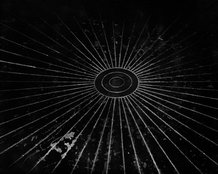 Texts2018Donald Kuspit - ARTFORUM
Texts2018Donald Kuspit - ARTFORUM Texts2018Ricardo Nicolau, Galeria Pedro Oliveira
Texts2018Ricardo Nicolau, Galeria Pedro Oliveira
 Texts2018Claudio Zecchi, CÃO – André Cepeda
Texts2018Claudio Zecchi, CÃO – André Cepeda
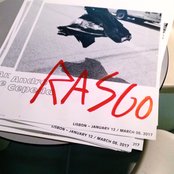 Exhibitions2017Rasgo, Cristina Guerra Contemporary Art Gallery
Exhibitions2017Rasgo, Cristina Guerra Contemporary Art Gallery
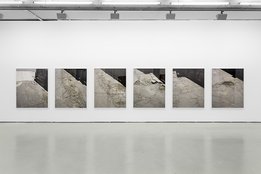 Texts2017Texto Pedro Llano
Texts2017Texto Pedro Llano 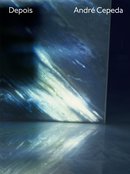 Books2016Depois
Books2016Depois  Texts2016At the base of vision text by Sérgio Mah
Texts2016At the base of vision text by Sérgio Mah Texts2016A History of Ruins and Ghosts by António Guerreiro
Texts2016A History of Ruins and Ghosts by António Guerreiro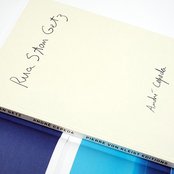 Books2015Rua Stan Getz
Books2015Rua Stan Getz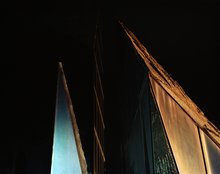 Work2015Depois
Work2015Depois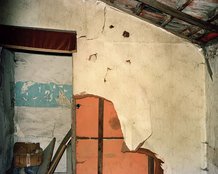 Texts2015Fade by Sérgio Mah
Texts2015Fade by Sérgio Mah Projects2014Untitled, Porto, 2014, 16 mm film, colour, 1’10’’
Projects2014Untitled, Porto, 2014, 16 mm film, colour, 1’10’’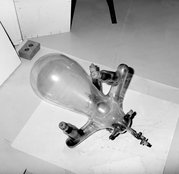 Projects2014Single, Mineral/Electricidade
Projects2014Single, Mineral/Electricidade Work2014Rua Stan Getz
Work2014Rua Stan Getz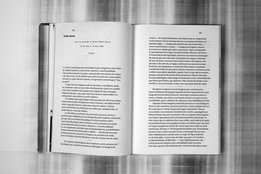 Texts2014Nothing by Delfim Sardo
Texts2014Nothing by Delfim Sardo Texts2014Say Nothing by Phillippe Azoury
Texts2014Say Nothing by Phillippe Azoury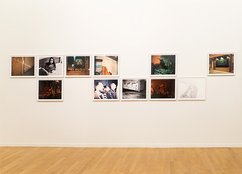 Projects2014Fade
Projects2014Fade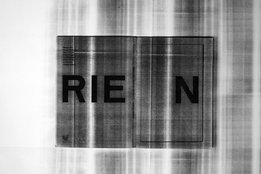 Books2014Rien Text Book
Books2014Rien Text Book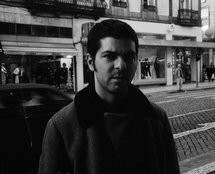 Projects2014Interview with Anna Meschiari (in French)
Projects2014Interview with Anna Meschiari (in French) Projects2014Exhibition views, Centro Cultural Vila Flor
Projects2014Exhibition views, Centro Cultural Vila Flor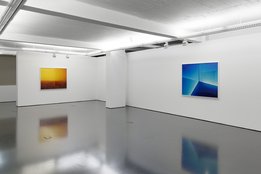 Projects2013Exhibition view, Galeria Pedro Cera
Projects2013Exhibition view, Galeria Pedro Cera Books2013Whispering Light/ Luz Sussurrada
Books2013Whispering Light/ Luz Sussurrada Texts2013Rien by Nuno Crespo
Texts2013Rien by Nuno Crespo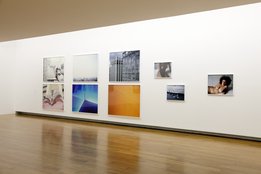 Texts2013Líneas abstractas by David Barro
Texts2013Líneas abstractas by David Barro 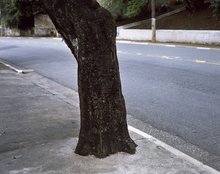 Texts2013São Paulo em corte by Agnaldo Farias
Texts2013São Paulo em corte by Agnaldo Farias Projects2013Lapa do Lobo
Projects2013Lapa do Lobo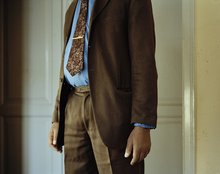 Projects2013Intendente
Projects2013Intendente Projects2013Super8 - HHY & The Macumbas, "Isaac, The Throat"
Projects2013Super8 - HHY & The Macumbas, "Isaac, The Throat" 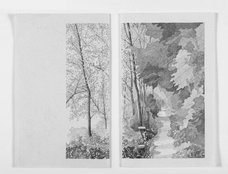 Books2012Canal
Books2012Canal Books2012Rien
Books2012Rien Projects2012Bandeiras, 2011, 16 mm film, colour, 1’10’’
Projects2012Bandeiras, 2011, 16 mm film, colour, 1’10’’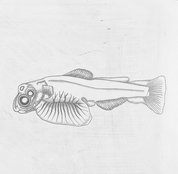 Projects2012LP - L'Histoire de La Croquette
Projects2012LP - L'Histoire de La Croquette Texts2012Rien by Rémi Coignet
Texts2012Rien by Rémi Coignet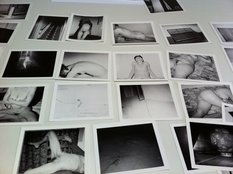 Work2012Rien
Work2012Rien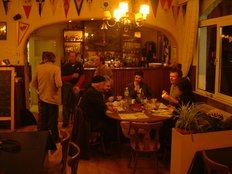 Projects2012Entrevista para abitpixel (in portuguese)
Projects2012Entrevista para abitpixel (in portuguese) Texts2012rien – nier - rein by Regina Guimarães
Texts2012rien – nier - rein by Regina Guimarães Projects2010Couple, Porto, 2009, 16 mm film, colour, 1’25’’
Projects2010Couple, Porto, 2009, 16 mm film, colour, 1’25’’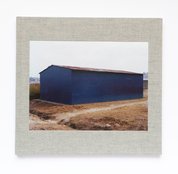 Books2010Ontem
Books2010Ontem Texts2010Intuited breathing by Miguel von Hafe Pérez
Texts2010Intuited breathing by Miguel von Hafe Pérez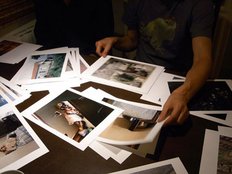 Texts2010Interview with Jean-Louis Godefroid
Texts2010Interview with Jean-Louis Godefroid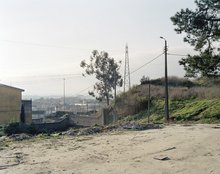 Work2010Ontem
Work2010Ontem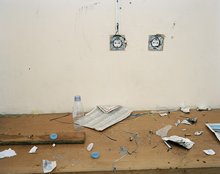 Texts2010Ontem to Foam Magazine by Sebastian Arthur Hau
Texts2010Ontem to Foam Magazine by Sebastian Arthur Hau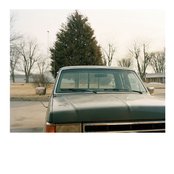 Projects2009LP River
Projects2009LP River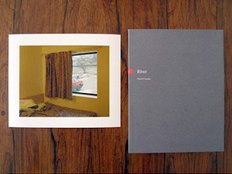 Books2009River
Books2009River Projects2008Exhibition views, Galeria ZdB
Projects2008Exhibition views, Galeria ZdB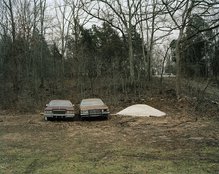 Projects2008River
Projects2008River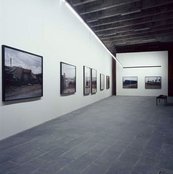 Texts2007what does the word ‘landscape’(...) by Delfim Sardo
Texts2007what does the word ‘landscape’(...) by Delfim Sardo Texts2006Moving by Johan Vonck
Texts2006Moving by Johan Vonck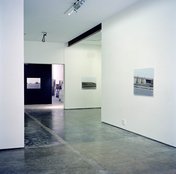 Texts2006Sleepwalking Images by Miguel von Hafe Pérez
Texts2006Sleepwalking Images by Miguel von Hafe Pérez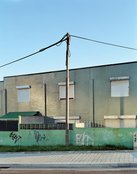 Projects2006Moving
Projects2006Moving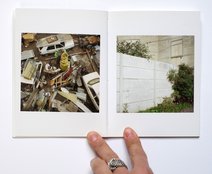 Books2005Anacronia
Books2005Anacronia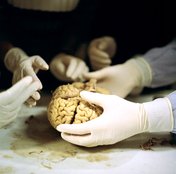 Texts2003Anacronia by Frits Gierstberg
Texts2003Anacronia by Frits Gierstberg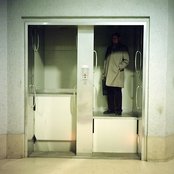 Texts2000Anacronia by Jean-Louis Godefroid
Texts2000Anacronia by Jean-Louis Godefroid Projects2000Anacronia
Projects2000Anacronia